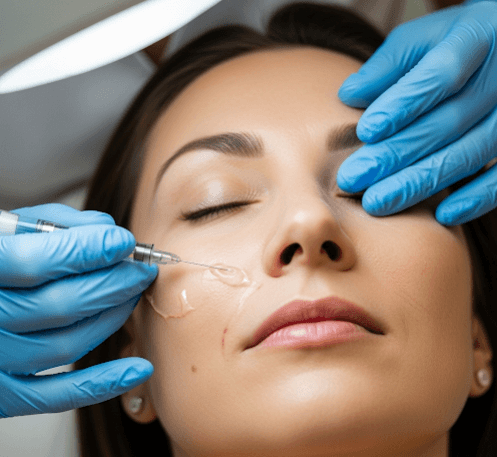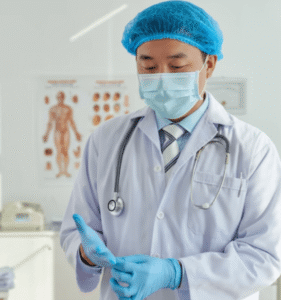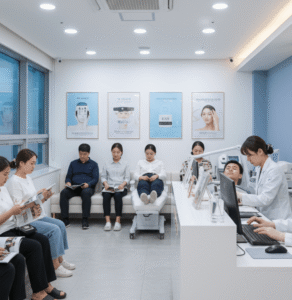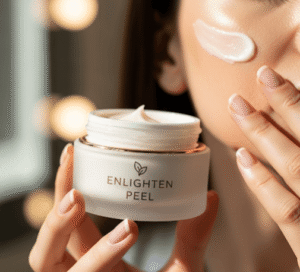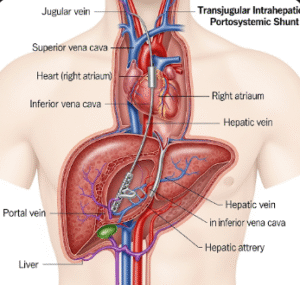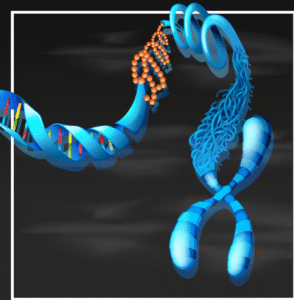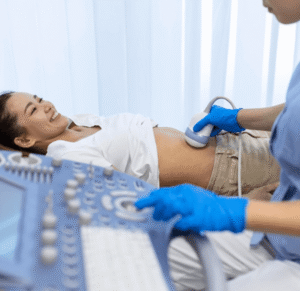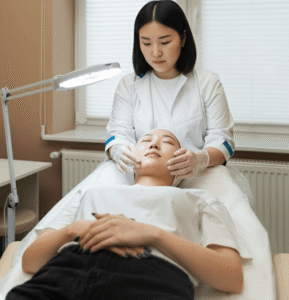🟢 What it is
Dermal fillers in Korea are injectable substances used to restore lost volume, smooth wrinkles, and enhance facial contours. They are among the most popular non-surgical aesthetic treatments worldwide and especially in Korea, where the beauty industry emphasizes natural, youthful, and balanced facial features.
The most commonly used dermal fillers are:
- Hyaluronic Acid (HA) Fillers: Hydrate and plump skin (e.g., Restylane, Juvederm, Teosyal, Revolax, Yvoire, Replengen).
- Calcium Hydroxylapatite (CaHA) Fillers: Stimulate collagen production and add structure (e.g., Radiesse).
- Poly-L-lactic Acid (PLLA) Fillers: Stimulate collagen gradually (e.g., Sculptra).
- Polymethylmethacrylate (PMMA) Fillers: Longer-lasting filler with microspheres (less common in Korea).
Korea is known for its next-generation dermal fillers that provide a more natural, skin-like feel and improved longevity.
🟢 Why it’s Done
Dermal fillers are done for both cosmetic enhancement and anti-aging. In Korea, the goal is subtle refinement rather than dramatic changes.
➡️ Anti-aging purposes: Restores volume lost due to aging, fills wrinkles and fine lines.
➡️ Facial balancing: Popular for creating the Korean ideal of a “V-line face” (slimmer, more defined contour).
➡️ Non-surgical augmentation: Enhances nose bridge, chin, jawline, and lips without surgery.
➡️ Acne scar improvement: Smooths depressed scars.
➡️ Skin hydration & glow: Some HA fillers also improve skin texture and hydration.
Korean beauty standards emphasize natural harmony over exaggerated features, so fillers are strategically placed to enhance subtle beauty and youthful skin.
🟢 Alternatives
Dermal fillers are not the only way to restore youthfulness or facial volume. Alternatives include:
🔹 Botox (Neurotoxin): Relaxes muscles to reduce dynamic wrinkles (often used with fillers).
🔹 Fat Grafting: Patient’s own fat is harvested and injected—longer-lasting but requires a minor procedure.
🔹 Thread Lifting: Uses dissolvable threads to lift sagging skin.
🔹 Laser Treatments (Fraxel, CO2, HIFU): Tightens skin and improves wrinkles without adding volume.
🔹 Skin Boosters (Rejuran, Profhilo, Juvelook): Stimulates collagen and hydration but does not provide as much volume as fillers.
🔹 Surgical Implants: Permanent option for nose, chin, or cheek augmentation (less popular nowadays due to advances in fillers).
Korean clinics often combine treatments—for example, fillers for volume + Botox for wrinkles + laser for skin texture.
🟢 Preparation
Before getting dermal fillers in Korea, preparation is important for both safety and results:
➡️ Consultation: Korean dermatologists use facial analysis and sometimes 3D imaging to plan precise filler placement.
➡️ Avoid blood thinners: Stop aspirin, ibuprofen, vitamin E, and fish oil supplements 3–5 days before treatment.
➡️ No alcohol or smoking: Helps reduce bruising and swelling.
➡️ Medical disclosure: Patients must inform doctors about allergies, autoimmune diseases, and pregnancy status.
➡️ Skin preparation: Avoid major skincare treatments (chemical peels, laser) just before filler.
🟢 How it’s Done
The dermal filler procedure in Korea is quick, safe, and precise—usually 15–30 minutes.
- Cleansing: The treatment area is cleaned and sterilized.
- Numbing: Topical anesthetic cream or lidocaine (many HA fillers contain lidocaine already).
- Injection technique:
- Needle injections for targeted areas (lips, wrinkles, nose).
- Cannula technique (blunt needle) for larger areas (cheeks, jawline) to reduce bruising.
- Molding: The doctor gently massages the area to shape and evenly distribute the filler.
- Final check: Symmetry and natural appearance are ensured.
In Korean clinics, the emphasis is on minimal filler volume with maximum natural effect, often called the “small-dose technique.”
🟢 Recovery
Recovery is fast and minimal compared to surgical options:
🔹 Downtime: Most patients return to normal activities immediately.
🔹 Swelling & redness: Typically lasts 1–3 days.
🔹 Bruising: May occur but usually fades in a week.
🔹 Final results: Immediate with HA fillers, but collagen-stimulating fillers (e.g., Sculptra) may take weeks to show.
✅ Post-care instructions in Korea:
- Avoid strenuous exercise, alcohol, and sauna for 24–48 hours.
- Do not press or massage the area (unless advised).
- Apply cold compress to reduce swelling.
- Always use sunscreen to protect treated skin.
Many patients in Korea choose maintenance sessions every 6–12 months depending on filler type.
🟢 Complications
Dermal fillers are generally safe in Korea due to experienced doctors and high-quality products, but possible side effects include:
⚠️ Common mild issues:
- Swelling, redness, itching, mild pain.
- Temporary lumps or unevenness.
⚠️ More serious risks (rare):
- Vascular occlusion (blockage of blood vessels) → can lead to skin necrosis or blindness if untreated.
- Infection at the injection site.
- Allergic reactions (rare with HA fillers).
- Migration of filler (if improperly placed).
➡️ In Korea, most clinics are equipped with hyaluronidase (an enzyme that dissolves HA fillers) for emergencies, which adds a layer of safety.
🟢 Treatment Options in Korea
Korea is a leader in filler technology and application techniques, offering diverse options tailored to different goals:
🔹 Popular Korean Filler Brands:
- Revolax, Yvoire, Replengen, Elravie, Neuramis, Dermalax – known for safety and natural results.
- International brands (Restylane, Juvederm, Teosyal) are also widely used.
🔹 Popular Filler Treatments in Korea:
- Nose Fillers: Non-surgical rhinoplasty for a higher, straighter nose bridge.
- Chin Fillers: Creates a sharper, more balanced profile.
- Jawline Fillers: Defines face shape for the “V-line” look.
- Cheek Fillers: Restores youthful fullness.
- Under-eye Fillers: Reduces hollows and dark circles.
- Lip Fillers: Enhances volume with a subtle, natural look (popular trend in K-beauty).
- Forehead & Temple Fillers: Corrects hollow or flat areas.
🔹 Costs in Korea:
- Small areas (lips, under-eyes): $200–$400 per session.
- Larger areas (cheeks, jawline, nose): $400–$800 per session.
- Premium fillers (long-lasting brands like Juvederm Voluma): $700–$1,200 per session.
Compared to the U.S. and Europe, Korea offers more affordable filler treatments with cutting-edge techniques, making it a global destination for medical tourism.
🟢 Final Thoughts
Dermal Fillers in Korea are more than just wrinkle treatments—they are a cornerstone of modern aesthetic medicine. With advanced products, artistic injection techniques, and a focus on natural beauty, Korean dermatologists have set global standards for safe and effective filler use.
➡️ For those seeking subtle facial balancing, anti-aging solutions, or non-surgical contouring, fillers in Korea provide fast, customizable, and long-lasting results.
➡️ With expert doctors and state-of-the-art clinics, complications are rare and patient satisfaction is high.
In summary: Dermal fillers in Korea are a safe, effective, and sophisticated option for anyone seeking to enhance their appearance while maintaining a natural, youthful look.

